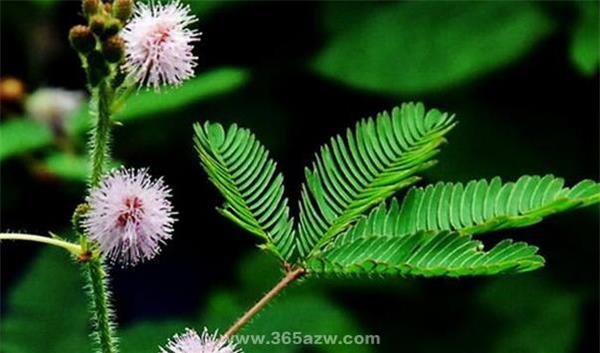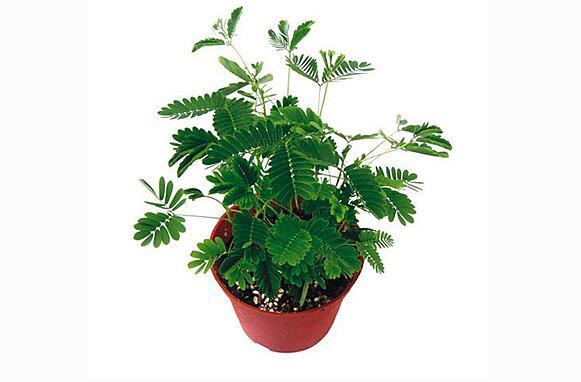Culture methods and matters needing attention of mimosa
Mimosa is a strange plant. Many people want to raise a mimosa but don't know how to do it. Next, let's take a look at the culture methods and precautions of mimosa.

(scientific name: Mimosa pudica Linn.) ): it is a perennial herb or subshrub of Leguminosae. Because the leaves respond to heat and light, they close immediately when touched by external forces, so they are named mimosa. Shaped like a fluffy ball. Pods bear fruit after flowering, and the fruit is flat and round. The leaves are feathery and compound leaves are alternate and arranged in palms. Flowering about after the height of summer, heads oblong, 2-3 in leaf axils. Flowers are white, pink, calyx campanulate, with 8 tiny calyx teeth, petals quadrifid, stamens 4, ovary glabrous. The pod is flattened, with 1 seed per pod node, and the internodes fall off at maturity. The florescence is September. The flowers, leaves and pods of mimosa have better ornamental effect, and are easy to survive, so they are suitable for potted flowers in balcony and indoor (human consumption or excessive contact with mimosa will also cause hair loss). It can also be planted in the courtyard and other places. Mimosa is different from other plants. When touched by people, its petiole is drooping and its small leaves are closed, so people understand it as shy, so it is called inductive grass, drinking grass, mimosa, mimosa and ugly grass (Cantonese). Native to tropical South America, it likes to be warm and humid and has general requirements for soil.
Matters needing attention in cultivating mimosa:

Apply fertilizer: mimosa can be fertilized once a month.
Watering points: shy prairie is a tropical plant, like a humid environment, so always keep the basin soil moist, watering according to the basin soil condition in summer, about once a day, do not let the soil dry, can often spray water to the plant, in winter to prevent freezing damage to reduce the amount of water.
Pruning essentials: pruning not only has the function of shaping, but also encourages plants to branch and blossom. The easiest way to get a cut is to find the strongest new buds to start with. That is to say, keep the new buds and cut everything else. If the plant itself is strong, it can do as it pleases. (leave at least two leaves) the plant itself will sprout at the interface between the leaf stem and the main branch.
Pot soil replacement: mimosa in that year generally does not need to be changed, just need to apply some fertilizer and water in the maintenance process. Mimosa which has been maintained for more than two years can be changed in spring, but there is no need to replace all the soil, generally half to 1/3!
Fengshui application of mimosa
Among plants, there are no eternal advantages and disadvantages, only eternal adaptation. Mimosa has the value of ornamental, medicinal and other convenience, but in terms of fengshui, it is necessary to look at both sides, or it can be said that the disadvantages of fengshui are much less than the advantages.

1. From the point of view of advantages, mimosa can bring joy to the family. The feathered slender leaves of mimosa are touched by external forces, and the leaves close immediately, so they are named mimosa. Their leaves also respond to heat and light, so their leaves also collapse every evening. Mimosa, also known as mimosa, shout for grass, afraid of ugly grass. Growth in clusters, Lignification at the base of the stem, up to 1 meter high, poor cold tolerance. If you touch the feathery slender leaves, the leaves immediately close, hence the name mimosa. The flowers are pink and the inflorescences are spherical and light. The gentle and sweet flower shape creates a romantic atmosphere.
Here, we see that the mimosa is very lovely and can indeed bring happiness to the family. The plant that can make the family happy is the fengshui plant, and the house that can make the family live happily is the fengshui house. It can be seen that a house with mimosa is a house with good feng shui.

The above is the introduction of the culture methods of mimosa. I hope you can enjoy today's article.
Related
- Wuhan Hospital Iron Tree Blooming Result Was Instantly Frightened by the Gardener Master
- Which variety of camellia is the most fragrant and best? Which one do you like best?
- What is the small blue coat, the breeding methods and matters needing attention of the succulent plant
- Dormancy time and maintenance management of succulent plants during dormancy
- Minas succulent how to raise, Minas succulent plant pictures
- What are the varieties of winter succulent plants
- How to raise succulent plants in twelve rolls? let's take a look at some experience of breeding twelve rolls.
- Attention should be paid to water control for succulent plants during dormant period (winter and summer)
- Watering experience of twelve rolls of succulent plants
- Techniques for fertilizing succulent plants. An article will let you know how to fertilize succulent plants.



